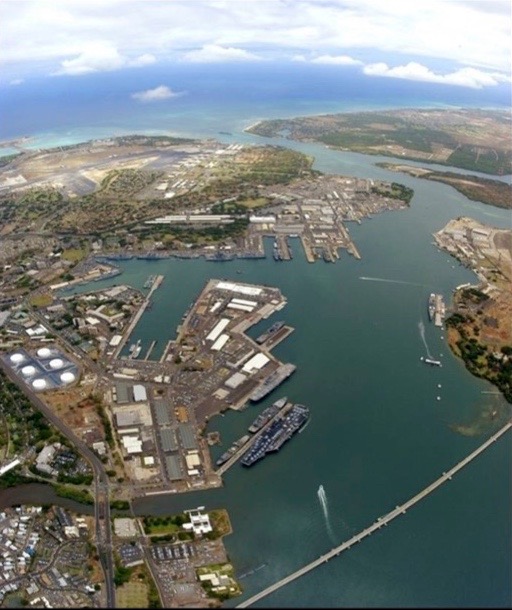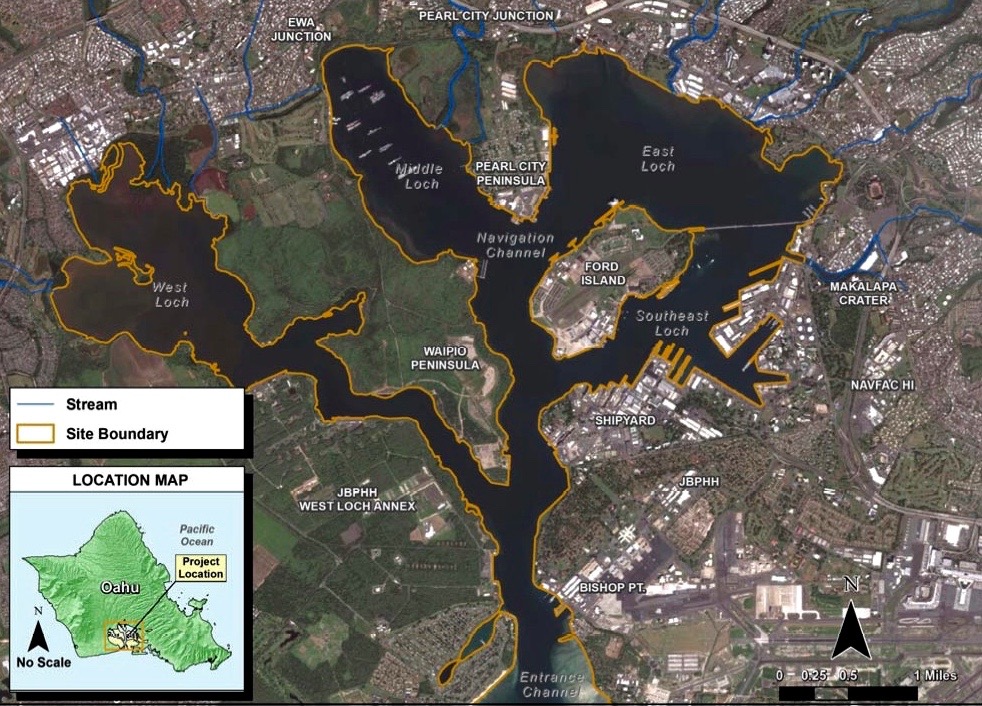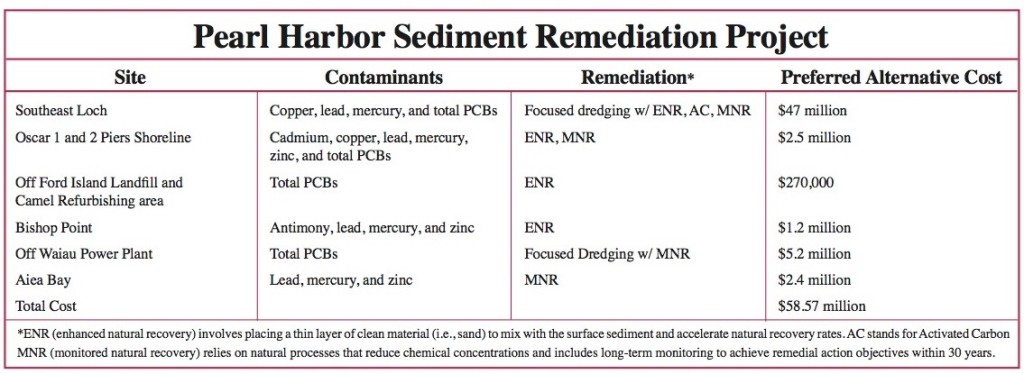
It may be unrealistic to think that anyone will ever be able to safely eat crabs or fish caught in Pearl Harbor, which, as the U.S. Navy says, is a “natural trap, or sink, for sediments and chemicals discharged with surface water runoff from approximately 110 square miles of watershed, or 20 percent of O`ahu’s land surface.” Even so, the Navy is going to take a shot at reducing contaminants in several parts of the harbor enough so that fish might be safe to eat within the next decade or two.
In 2009, the Navy determined that sediments at ten sites in the harbor — part of a larger Superfund site — were polluted with metals (antimony, cadmium, copper, lead, mercury, silver, and zinc), PCBs, and chlorinated pesticides, namely dieldrin and endosulfan. At four of those sites, the Navy proposed no active remediation because it felt the chemical concentrations there “do not pose unacceptable risk to people or the environment.” At the other six, however, the Navy has determined the sediments include chemicals that do threaten human health and the environment. Those sites include Southeast Loch, Oscar 1 and 2 Piers Shoreline, Off Ford Island Landfill and Camel Refurbishing Area, Bishop Point, Off Waiau Power Plant, and Aiea Bay.
 If it sticks with the plan it proposed earlier this year, the Navy may be spending nearly $60 million remediating contaminated sediments from those sites. Simply dredging the sediments would have been the expensive option and would have cost about half a billion dollars to implement. Instead, the Navy has recommended some focused dredging at two of the sites, some sand mixing, as well as the use of activated carbon. The public comment period on the plan ended in March and a Record of Decision on the preferred alternatives is expected to be signed by the Navy, the EPA, and state Department of Health in 2019, according to Denise Emsley, public affairs officer for the Naval Facilities Engineering Command Hawai`i.
If it sticks with the plan it proposed earlier this year, the Navy may be spending nearly $60 million remediating contaminated sediments from those sites. Simply dredging the sediments would have been the expensive option and would have cost about half a billion dollars to implement. Instead, the Navy has recommended some focused dredging at two of the sites, some sand mixing, as well as the use of activated carbon. The public comment period on the plan ended in March and a Record of Decision on the preferred alternatives is expected to be signed by the Navy, the EPA, and state Department of Health in 2019, according to Denise Emsley, public affairs officer for the Naval Facilities Engineering Command Hawai`i.
Because of the contamination in the harbor, the Navy limits fishing to certain sites and it’s strictly catch-and-release. Should the proposed plan be implemented, PCB concentrations in fish tissue is projected to drop to 190 μg/kg (wet weight for fish fillets) within the 10 to 20-year natural recovery period following completion of remedy construction, the Navy’s plan states. “The fish tissue target is based on the [Hawai`i Department of Health] (2012) fish advisory level for limited fish consumption. EPA and HDOH have concurred with the preferred alternatives presented,” it states. The DOH advises that a person may safely consume up to one four-ounce serving per month of fish with that level of PCBs in their tissue.

— Teresa Dawson
Volume 26, Number 11 May 2016


Cara
Is there anyway a member of the public can access the reports and data relative to this sediment contamination and testing results? I would like to learn more about the levels and locations of chlorinated pesticides found. If someone could point me in the right direction to find these reports and data, I would greatly appreciate it. Mahalo . . .